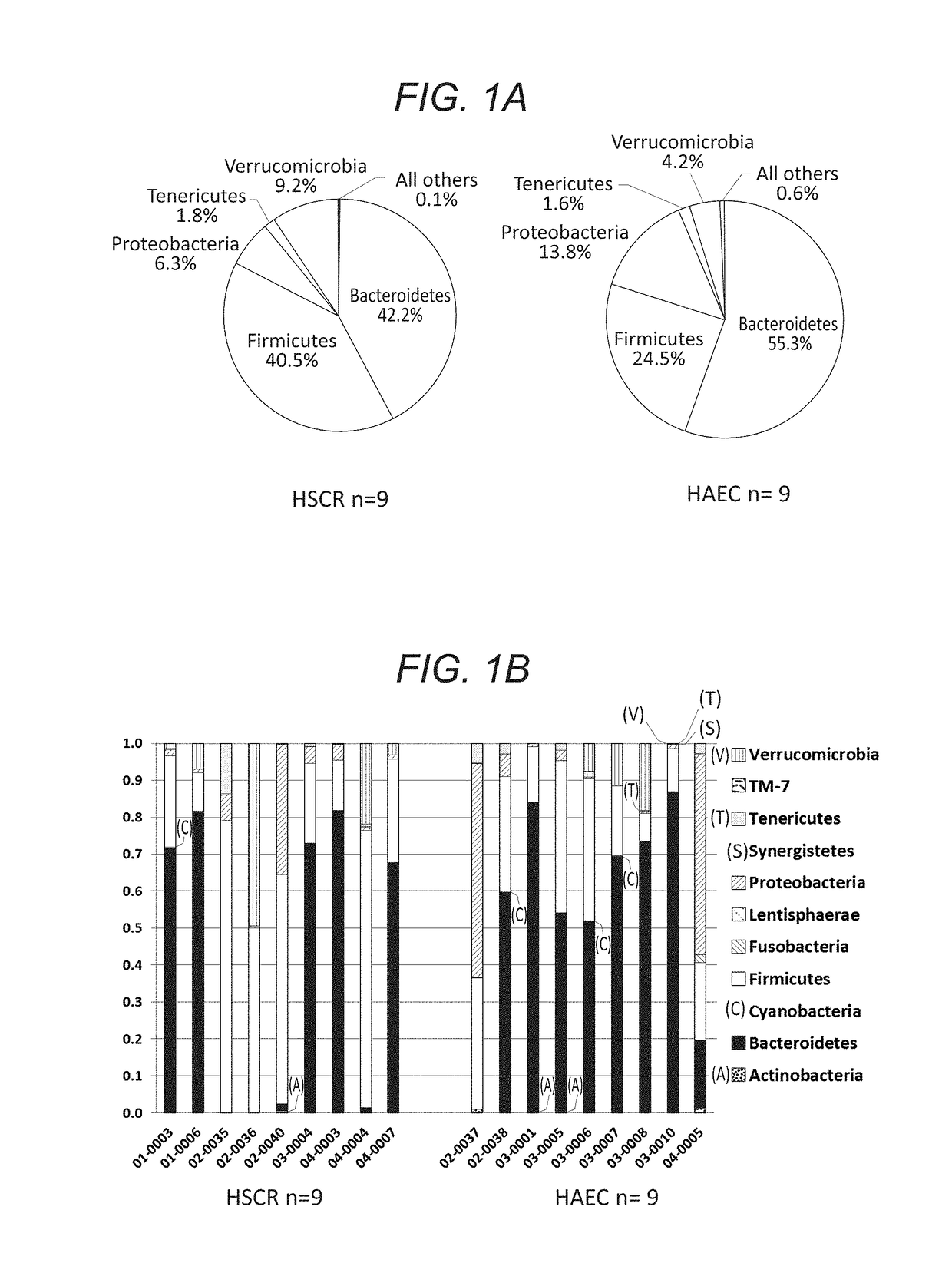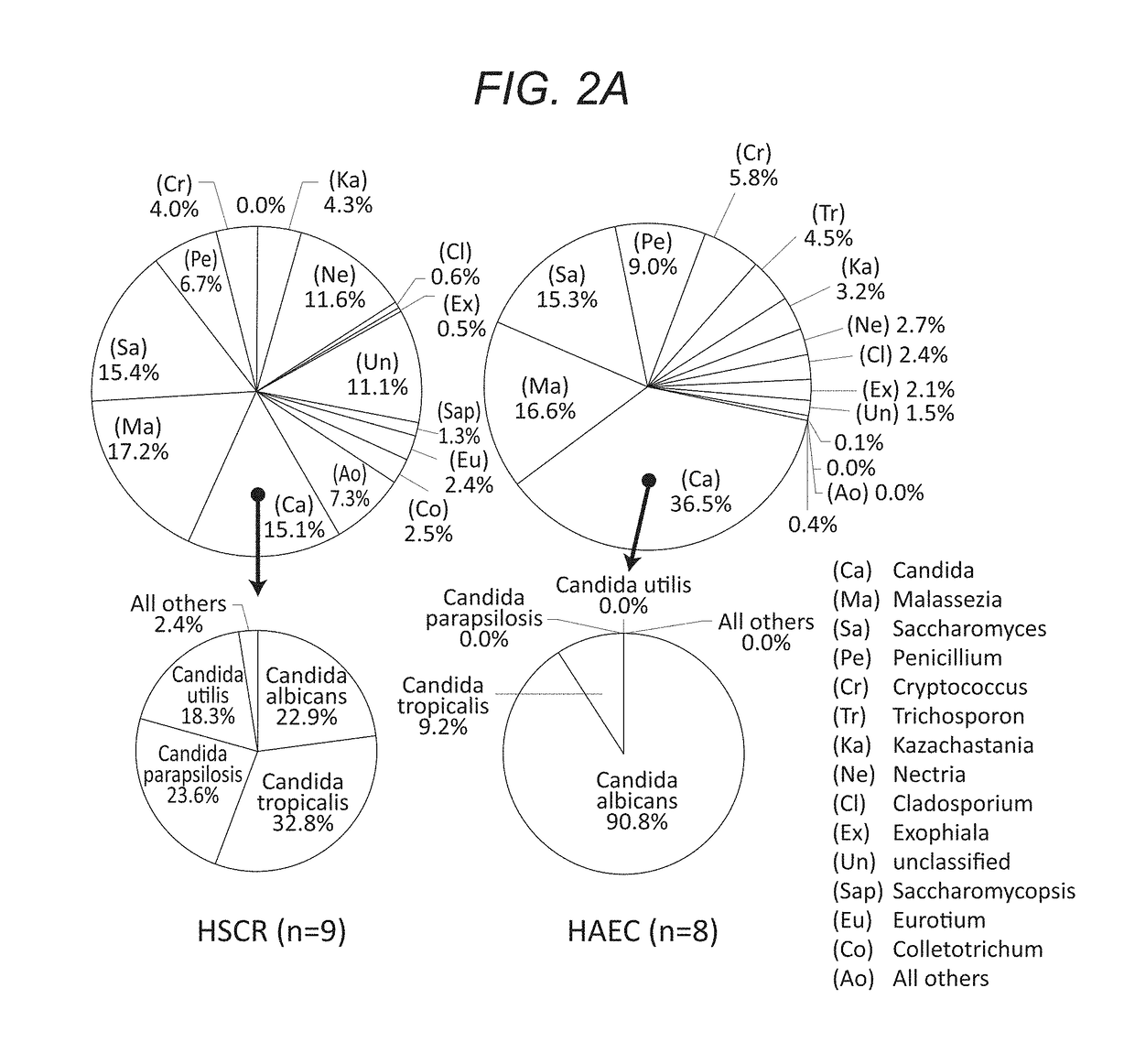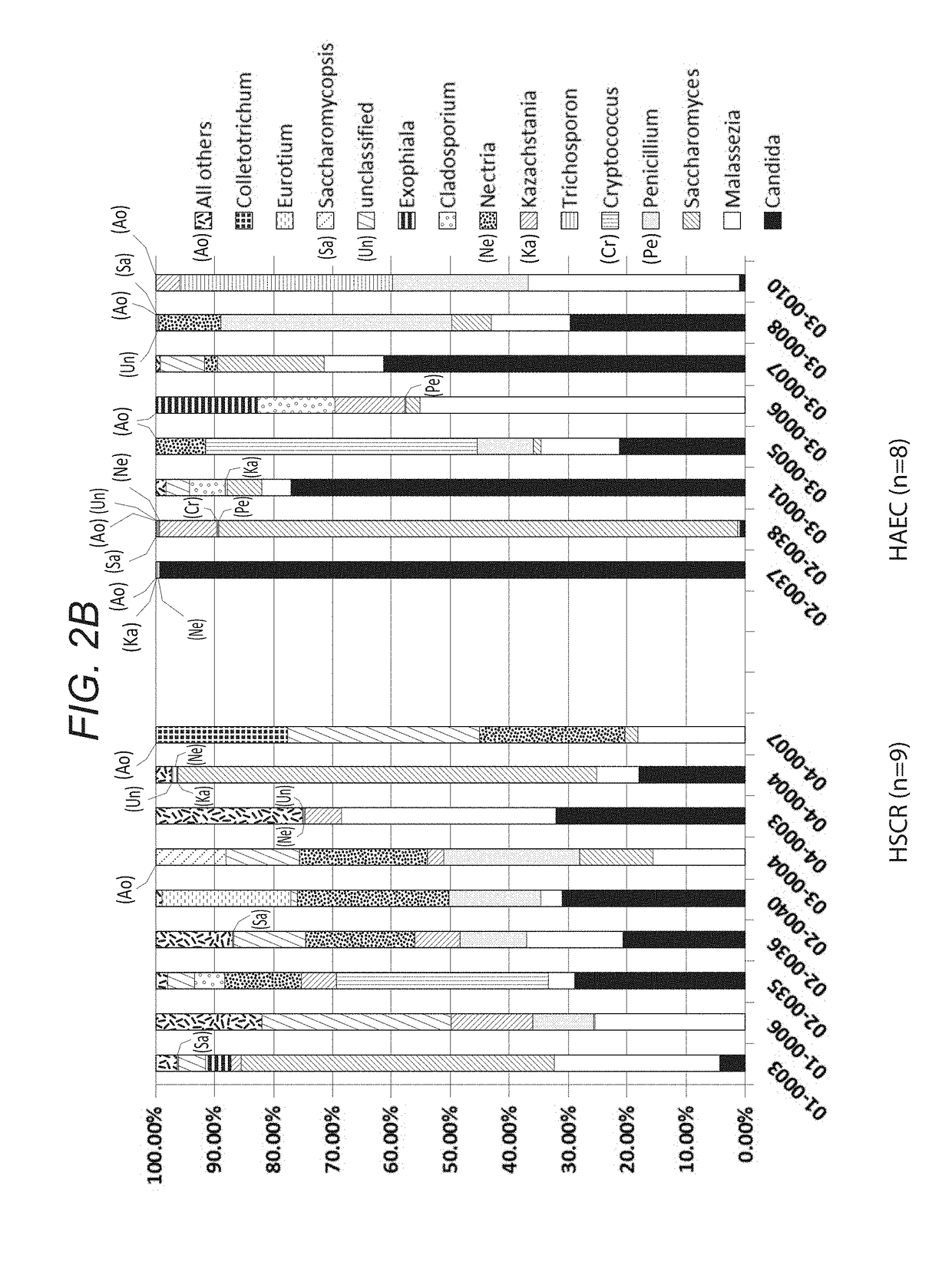Antifungal therapy for the treatment of hirschsprung-associated enterocolitis
a technology of enterocolitis and antifungal therapy, which is applied in the direction of instruments, saccharide peptide ingredients, biochemistry apparatus and processes, etc., can solve the problems of frequent hospitalization, poorly understood underlying biological mechanisms, and little knowledge about the underlying mechanisms
- Summary
- Abstract
- Description
- Claims
- Application Information
AI Technical Summary
Benefits of technology
Problems solved by technology
Method used
Image
Examples
example 1
Patients
[0121]Children with Hirschsprung disease who met inclusion criteria were enrolled from four member institutions of the HAEC Collaborative Research Group (HCRG): Cedars-Sinai Medical Center, Los Angeles, Calif.; Astrid Lindgren Children's Hospital, Karolinska University Hospital, Stockholm, Sweden; Children's Hospital Los Angeles, Los Angeles, Calif.; Children's Hospital of Oakland, Oakland, Calif. Written informed consent was obtained from a parent by the attending surgeons or research nurses at each site. We enrolled 20 children with HSCR, 10 never had a history of enterocolitis and 10 had a history of at least one episode of HAEC based on HAEC scoring system described by Pastor et al. (Development of a standardized definition for Hirschsprung's-associated enterocolitis: a Delphi analysis. J PEDIATR SURG 2009. 44: 251-256.) Detailed clinical information was collected using standardized questionnaires that included demographic, medical history, surgical history, radiographic...
example 2
[0142]We have developed a rapid molecular method of quantitative real-time polymerase chain reaction (qPCR) to detect Candida albicans in human stools. To further evaluate our qPCR method as a rapid and potentially less expensive alternative to assessing C. albicans fecal load (and potentially other clinically relevant fungi), we compared it to the currently accepted culture-based method using the services off the Clinical Microbiology lab here at CSMC using 13 human stool specimens from HD patients with or without enterocolitis (HAEC). The comparison results are reported as below.
TABLE 3Culture resultsqPCR results of C. albicansSubjectof C. albicans(Number ofID#(CFU / 100 mg)C albicans / 100 mg stool)103-0001>500 588 203-0002225* 9402097* 303-000403403-000552503-000606603-000800703-0009200 3803-001100903-0012031003-001325 01103-0018011203-0019001302-00037>10,000,000 25402166
[0143]The Correlation analysis (Pearson) indicated that correlation coefficients r=0.935 (FIG. 6).
[01...
example 3
Antibiotic and Antifungal Treatment in Murine Model of HAEC
[0145]We test antibiotic and antifungal agents and their combinations on the 129sv / Ednrb mouse strain shown to be a model of HAEC. The experimental groups and protocol are described below:
[0146]Medicated water which contains enrofloxacin (Baytril), metronidazole, vancomycin, natamycin (Pimaricin), fluconazole, and / or CRESEMBA (Isavuconazole sulfate) are administered to pregnant mice from the time that the pregnancy is noted, through weaning of the pups. In other words, the administration of medicated water to moms are stopped after weaning, and then continued with the weaned pups.
[0147]Six groups of animals (129sv / Ednrb-null mouse strain, n=5-8 per group) with different treatment are described as below. The dosage was calculated by the concentration of antibiotic and antifungal agents and assuming a mouse taking 5 ml water per day based on published data.
[0148]Group 1. Antibiotic water (ABX): Baytril (enrofloxacin) 0.25 mg / m...
PUM
| Property | Measurement | Unit |
|---|---|---|
| amplicon mass | aaaaa | aaaaa |
| compositions | aaaaa | aaaaa |
| width | aaaaa | aaaaa |
Abstract
Description
Claims
Application Information
 Login to View More
Login to View More - R&D
- Intellectual Property
- Life Sciences
- Materials
- Tech Scout
- Unparalleled Data Quality
- Higher Quality Content
- 60% Fewer Hallucinations
Browse by: Latest US Patents, China's latest patents, Technical Efficacy Thesaurus, Application Domain, Technology Topic, Popular Technical Reports.
© 2025 PatSnap. All rights reserved.Legal|Privacy policy|Modern Slavery Act Transparency Statement|Sitemap|About US| Contact US: help@patsnap.com



